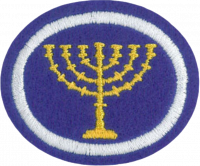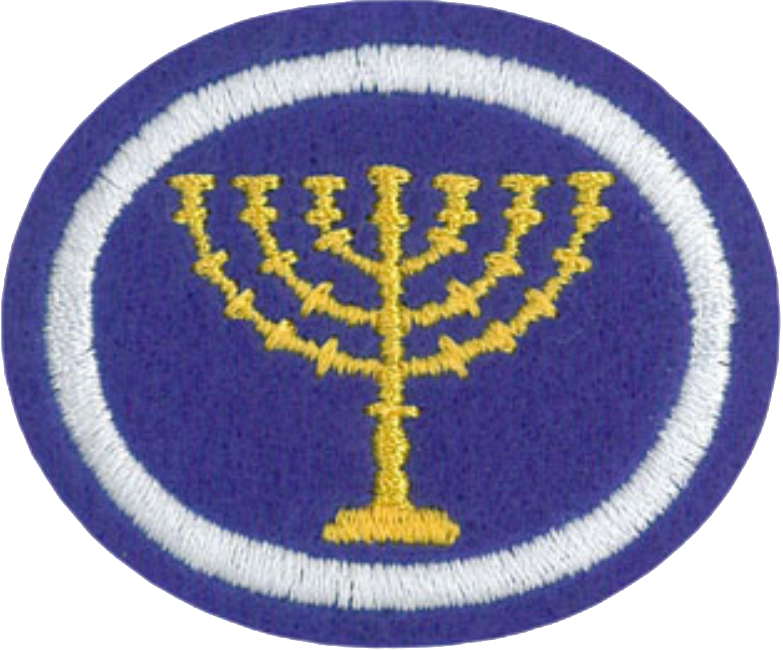Difference between revisions of "AY Honors/Sanctuary/Requirements 2/es"
(Created page with "</noinclude>Explorar las partes del santuario descritas en Éxodo 25-40: <noinclude>") |
(Created page with "</noinclude>Nombrar el mobiliario creado para cada sección del santuario. Explicar qué materiales (madera, oro, pieles, etc.) se usaron para hacer cada parte. Explicar lo qu...") |
||
| Line 9: | Line 9: | ||
<noinclude></noinclude><section end=req1a /></b> | <noinclude></noinclude><section end=req1a /></b> | ||
| − | :<b>b. <section begin=req1b /><noinclude> | + | :<b>b. <section begin=req1b /><noinclude></noinclude>Nombrar el mobiliario creado para cada sección del santuario. Explicar qué materiales (madera, oro, pieles, etc.) se usaron para hacer cada parte. Explicar lo que representa cada mueble. |
| − | </noinclude> | + | <noinclude></noinclude><section end=req1b /></b> |
| − | <noinclude | ||
| − | |||
:<b>c. <section begin=req1c /><noinclude><div lang="en" dir="ltr" class="mw-content-ltr"> | :<b>c. <section begin=req1c /><noinclude><div lang="en" dir="ltr" class="mw-content-ltr"> | ||
Revision as of 02:22, 1 April 2021
Nivel de destreza
2
Año
2004
Version
23.12.2025
Autoridad de aprobación
División Norteamericana
1. Explorar las partes del santuario descritas en Éxodo 25-40:
- a. Nombrar las tres secciones principales del complejo del tabernáculo, comenzando con el atrio.
- b. Nombrar el mobiliario creado para cada sección del santuario. Explicar qué materiales (madera, oro, pieles, etc.) se usaron para hacer cada parte. Explicar lo que representa cada mueble.
- c.
Describe the number and type of coverings of the sanctuary. Tell what each covering represented.
- d.
Create a list of at least 10 words that you believe need to be understood completely to make the sanctuary story make sense. Create a basic definition for each of the words.
Draw a scale model of the sanctuary on 11 x 17 (A3) piece of paper, the courtyard, and the position of all the furnishings (remember to add N, S, E, W).
Engage in a See/Think/Wonder activity with artistically rendered images from the sanctuary. Journal/take notes about what you SEE when you look at each image, what you THINK ABOUT when you see the picture, and what you WONDER ABOUT GOD when you see each image. Images displayed (printed or media display) should include:
- a.
Sanctuary and courtyard
- b.
Altar of Burnt Offerings
- c.
Laver/Wash Basin
- d.
Candlestick
- e.
Table of Shewbread
- f.
Altar of Incense
- g.
Ark of the Covenant
- h.
High Priest
4.
Discover and discuss the following in small groups. Have someone in each group record notes to share with larger groups or your instructor.
- a.
Why did the Israelites need a sanctuary? Was it to be for God’s benefit or theirs? Consult Exodus 25:8-10 as you create your answer.
- b.
What do the sanctuary, Jesus’ birth/ministry, and Jesus’ Second Coming all have in common? Consult Exodus 25:8, Matthew 1:22-23, and Revelation 21:3-4 for your answer. Summarize how this might be a key theme of the sanctuary.
- c.
What role did the sanctuary play in demonstrating the forgiveness of sins? Why don’t we need the same system to receive forgiveness today? Consult Romans 3:23, 6:23, Genesis 4:3-7, John 1:29, Hebrews 9:22-28, and 1 John 1:9.
5.
Briefly list the following information about the priests who served in the sanctuary:
- a.
What tribe they belonged to, and the family they all descended from.
- b.
When and how the priestly family was chosen.
- c.
Functions of a priest in the daily service of the sanctuary and on the Day of Atonement.
- d.
A description of the clothing of a common and the high priest.
6.
Discover the following about daily sacrifices and the annual Day of Atonement:
- a.
Survey Leviticus 1-5 to discover the types of offerings God commanded to be offered at the sanctuary. Briefly describe the types of offerings offered at the sanctuary. What was each type of sacrifice’s frequency & purpose? Use a simple chart or table to outline your summary.
- b.
After reading Leviticus 16, summarize the ceremonies on the Day of Atonement. Use the questions "Who," "What," "When," "Where," and "Why" to build your summary. If possible, watch a reenactment of the Day of Atonement online.
7.
Discuss or journal a response to the following questions:
- a.
What would make a sin sacrifice of a lamb difficult for you personally?
- b.
When you think about actions and decisions you have made recently, how would needing to kill a lamb to receive forgiveness potentially affect the choices you make?
- c.
Write a note or draw a sketch as a response to God’s forgiveness of your sins.
8.
Do one of the following:
- a.
Make or assemble a simple 3D scale model of the sanctuary using molding media, cardstock, LEGO, or other artistic media.
- b.
Use foil, cardboard, newspaper, or similar temporary construction materials to create full-sized or nearly full sized models of one or more of the pieces of sanctuary furniture.
- c.
With string and tent stakes, or their equivalent, measure out and outline the dimensions of the sanctuary.
- d.
Assist with the set up and take down of a full-size model of the sanctuary if available in your area.
9.
For each part of the sanctuary created above, draw, illustrate, or explain how that item helped the Israelites understand God’s love and care for them, and how it helps us today understand Christ’s ministry for us.
10.
As a summary activity, do one of the following:
- a.
Create a symbol out of a material of your choice or find an object symbol that will remind you of God’s salvation/forgiveness and/or His true character of love as you have seen demonstrated as you've earned this honor. Share why that symbol/object illustrates this concept. If possible, put it in a place where you can see it often.
- b.
Create a pipe cleaner sculpture to represent the biggest message from this honor that you want to remember. Share. (Ensure personalized sharing: "I want to remember ______________.")


